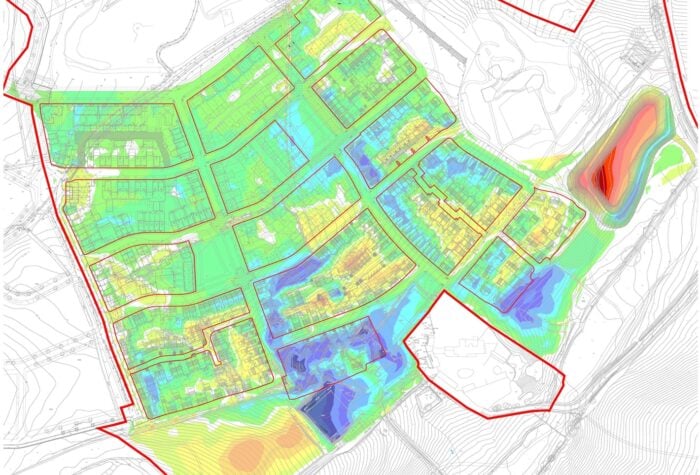
Carbon-Neutral Construction: The Future of Sustainable Infrastructure
The construction sector, long recognised as a major contributor to global carbon emissions, stands at a critical juncture. With increasing pressure from regulators, clients, and communities to build responsibly, the industry must adopt radical innovations in materials and methods. This paper explores cutting-edge strategies that not only reduce embodied and operational carbon but redefine how infrastructure can be conceived, constructed, and maintained.
Materials as Climate Catalysts
Traditional materials like cement and quarried aggregates are high-carbon culprits. The emergence of carbon-neutral and carbon-negative alternatives signals a transformative shift:
-
Cement Substitutes: Can reduce embodied carbon from 0.95 to just 0.07 tonnes CO₂ per tonne – an 80%+ reduction.
-
Recycled Aggregates: Repurposing waste plastic into sand substitutes not only curbs plastic pollution but turns aggregate production into a carbon-negative process.
-
Engineered Timber Products: Cross-laminated timber (CLT) and laminated veneer lumber (LVL) embody carbon sequestration within structural components, reinforcing strength with climate-conscious design.
-
Proprietary Insulation: These ultra-light materials cut energy demand dramatically, boasting superior thermal resistance in ultra-thin layers.

Construction Methods Redefined
Carbon reduction must be baked into every stage of construction, not simply tacked on post-design. Emerging practices include:
-
Life Cycle Assessment (LCA): From material sourcing to end-of-life, LCA ensures carbon-conscious decision-making across the value chain.
-
Prefabrication & Modular Construction: These techniques minimize waste and energy through off-site production precision and accelerated build times.
-
Smart Technologies: IoT integration in buildings enables real-time optimization of HVAC, lighting, and energy consumption – dramatically lowering operational emissions.
-
Green Roofs & Living Walls: Vegetated surfaces cool urban heat islands, absorb carbon, and restore biodiversity – all while insulating buildings.
Implementation Challenges & Strategic Levers
Despite the promise of these innovations, adoption is uneven. Key challenges include:
-
Standardisation Gaps: Inconsistent specifications across firms and regions hinder scalability. A unified framework is critical.
-
Procurement Bias: Traditional cost metrics fail to value long-term carbon savings. Reforming procurement practices to prioritize LCA-aligned options is vital.
-
Skills Shortage: Deploying new materials and tech requires upskilling across design, engineering, and site personnel.
-
Client Education: Stakeholders must be informed of the benefits beyond compliance – from lifecycle cost savings to enhanced ESG credentials

A Call to Action
As civil engineering professionals, we hold the blueprints for a carbon-conscious future. Leading firms must transition from reactive compliance to proactive leadership -championing innovation, codifying best practices, and amplifying the message across industry bodies.
Standardisation must extend beyond drawings and specifications to carbon metrics, forming the backbone of every project decision. By marrying engineering precision with environmental responsibility, we don’t just reduce emissions – we reshape the narrative of infrastructure itself.

Meet the Civils Team...

Christian McArdle
Read Profile
Phillip Baker
Read Profile
Richard Moorcroft
Read Profile
Ryan Meade
Read Profile
Siobhán McGlynn
Read Profile
Siobhan Murphy
Read Profile
Tom Mitchell
Read ProfileCheck out the Civil Engineering Services...

Civil Engineering Group
More News

Podcast Episode #7 – SME Developers – Lifting the Barriers
December 18, 2025
In our latest podcast episode, we dive into the critical role of small and medium-sized enterprise (SME) developers in meeting the UK Government’s ambitious target of delivering 1.5 million homes by the end of this Parliament term.

Webinar Summary: Section 106 Contributions: Purpose & Recovery
December 17, 2025
Section 106 (S106) agreements play a vital role in shaping sustainable communities by ensuring that developments contribute to essential infrastructure and services. However, recent research highlights a growing challenge: billions of pounds in developer contributions remain unspent by local authorities. At Brookbanks, we believe understanding the purpose of these agreements, and how to recover unspent funds, is critical for developers and stakeholders alike.

Building Smarter from the Start
December 15, 2025
At Brookbanks, we know that time and budget are often the defining factors in any project. That’s why we focus on delivering timely, value-driven outcomes through smarter design strategies.
